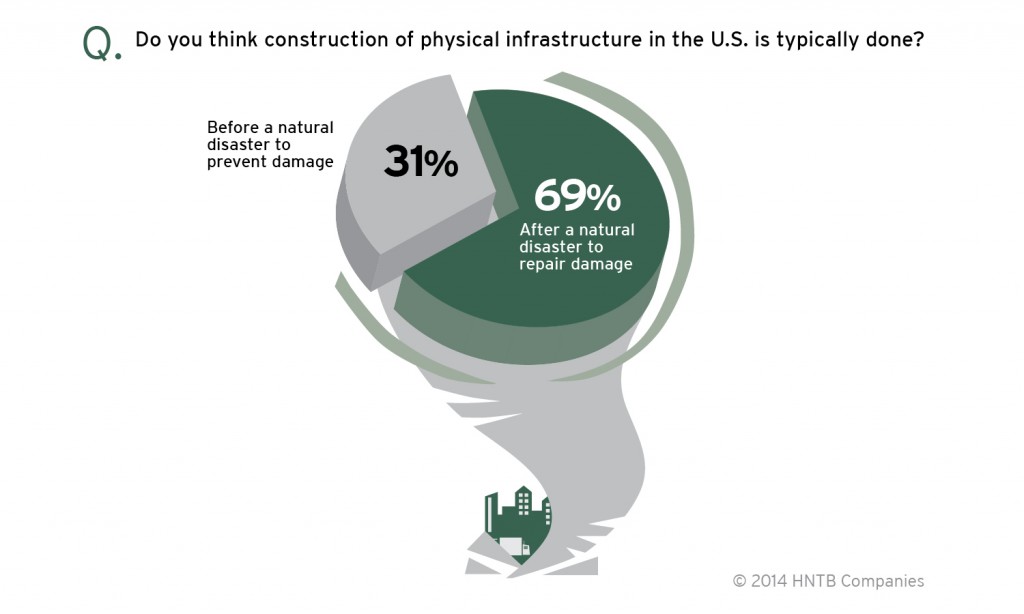The following post was written by guest contributor Pete Rahn, Leader National Transportation Practice at HNTB Corporation.
It’s time for America to get moving with needed investments in our infrastructure system. A recent survey from HNTB Corporation shows Americans are looking for a new transportation vision and are ready to get behind leaders who have the courage to promote a workable plan paid by user fees.
Yet many Americans also believe the issue is only pushed to the forefront after a structural failure (38 percent) or natural disaster (37 percent) has caused destruction. Unfortunately, it doesn’t stay in the news for long.
We’ve often seen that played out in the media, whether it’s an emergency closure due to safety concerns, such as the original 80-year-old Lake Champlain Bridge connecting Crown Point, N.Y., and Chimney Point, Vt., in 2009; an accidental impact and resulting damage, such as the collapse of a portion of Interstate 5 over the Skagit River near Mount Vernon, Wash., last year; or the devastation wreaked by modern natural disasters, such as in the Northeast during Superstorm Sandy in 2012. Such acute damage and resulting closures threaten communities’ safety and economic healthy, vividly reminding us of the importance of maintaining the nation’s infrastructure.

In fact, nearly 2 in 3 (65 percent) Americans fear a local infrastructure failure will occur within a year, and 1 in 5 (20 percent) are “extremely concerned” about a potential failure. Perhaps more striking for those of us in the transportation industry, 9 in 10 think at least one mode of U.S. transportation needs a spark of innovation and nearly half (47 percent) believe physical infrastructure damage is more likely to be caused by lack of maintenance than age, faulty construction or even a natural disaster.portion of Interstate 5 over the Skagit River near Mount Vernon, Wash., last year; or the devastation wreaked by modern natural disasters, such as in the Northeast during Superstorm Sandy in 2012. Such acute damage and resulting closures threaten communities’ safety and economic healthy, vividly reminding us of the importance of maintaining the nation’s infrastructure.
Most Americans want the nation’s transportation network and key infrastructure facilities to be improved, yet we’ve struggled to identify a compelling vision that will drive future state and federal investments and spur future growth. Clearly identifying the risks associated with inaction and underinvestment does resonate with the majority of the country.
Perhaps another, more positive lynchpin for our vision of America’s transportation future is focusing on how we can make all of our transportation options work better as a system, or what we call multimodalism.
Many Americans are unhappy with local transportation options because they don’t work together as well as they should. More than half (53 percent) think it’s difficult to access different modes of transportation. Better scheduling and seamless transferability would push drivers to leave their cars behind and hop aboard transit more often. Nearly 2 in 3 (63 percent) Americans think the modes of transportation in their area need to be more efficient.
We need to get better at preparing for the future before our needs become acute. Envisioning a multimodal system where American’s transportation choices maintain safety and become seamless and sustainable can encourage the support we need to fund vital infrastructure priorities at the federal, state and local levels.
